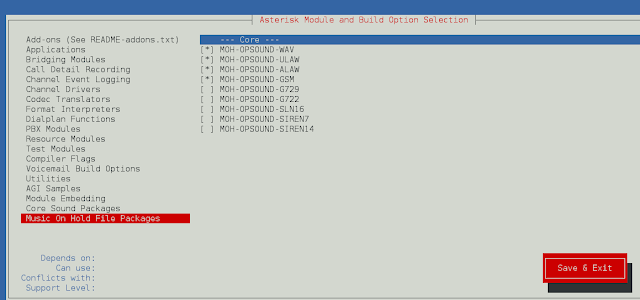Given a list of tuples, write a Python program to sort the tuples by the second item of each tuple.
Examples:
Input : [('for', 24), ('Geeks', 8), ('Geeks', 30)]
Output : [('Geeks', 8), ('for', 24), ('Geeks', 30)]
Input : [('452', 10), ('256', 5), ('100', 20), ('135', 15)]
Output : [('256', 5), ('452', 10), ('135', 15), ('100', 20)]
Method #1: Using the Bubble Sort Using the technique of Bubble Sort to we can perform the sorting. Note that each tuple is an element in the given list. Access the second element of each tuple using the nested loops. This performs the in-place method of sorting. The time complexity is similar to the Bubble Sort i.e. O(n^2).
Python3
# Python program to sort a list of tuples by the second Item# Function to sort the list of tuples by its second itemdef Sort_Tuple(tup): # getting length of list of tuples lst = len(tup) for i in range(0, lst): for j in range(0, lst-i-1): if (tup[j][1] > tup[j + 1][1]): temp = tup[j] tup[j] = tup[j + 1] tup[j + 1] = temp return tup# Driver Codetup = [('for', 24), ('is', 10), ('Geeks', 28), ('GeeksforLazyroar', 5), ('portal', 20), ('a', 15)]print(Sort_Tuple(tup)) |
[('GeeksforLazyroar', 5), ('is', 10), ('a', 15), ('portal', 20), ('for', 24), ('Geeks', 28)]
Time Complexity: O(N2)
Auxiliary Space: O(1)
Method #2: Using sort() method While sorting via this method the actual content of the tuple is changed, and just like the previous method, the in-place method of the sort is performed.
Python3
# Python program to sort a list of# tuples by the second Item using sort()# Function to sort the list by second item of tupledef Sort_Tuple(tup): # reverse = None (Sorts in Ascending order) # key is set to sort using second element of # sublist lambda has been used tup.sort(key = lambda x: x[1]) return tup# Driver Codetup = [('rishav', 10), ('akash', 5), ('ram', 20), ('gaurav', 15)]# printing the sorted list of tuplesprint(Sort_Tuple(tup)) |
[('akash', 5), ('rishav', 10), ('gaurav', 15), ('ram', 20)]
Time Complexity: O(NlogN)
Auxiliary Space: O(1)
Method #3: Using sorted() method Sorted() method sorts a list and always returns a list with the elements in a sorted manner, without modifying the original sequence. It takes three parameters from which two are optional, here we tried to use all of the three: Iterable : sequence (list, tuple, string) or collection (dictionary, set, frozenset) or any other iterator that needs to be sorted. Key(optional) : A function that would serve as a key or a basis of sort comparison. Reverse(optional) : To sort this in ascending order we could have just ignored the third parameter, which we did in this program. If set true, then the iterable would be sorted in reverse (descending) order, by default it is set as false.
Python3
# Python program to sort a list of# tuples by the second Item using sorted()# Function to sort the list by second item of tupledef Sort_Tuple(tup): # reverse = None (Sorts in Ascending order) # key is set to sort using second element of # sublist lambda has been used return(sorted(tup, key = lambda x: x[1])) # Driver Codetup = [('rishav', 10), ('akash', 5), ('ram', 20), ('gaurav', 15)]# printing the sorted list of tuplesprint(Sort_Tuple(tup)) |
[('akash', 5), ('rishav', 10), ('gaurav', 15), ('ram', 20)]
Time Complexity: O(NlogN)
Auxiliary Space: O(1)
Method 4: Using the itemgetter function from the operator module
The itemgetter function is a function from the operator module that allows you to specify which element in a tuple you want to sort by. In the example above, the itemgetter(1) function tells the sorted function to sort the tuples by the second element in each tuple (since indices start at 0, the second element has index 1).
Here is an example of how you can use itemgetter to sort a list of tuples by the first element instead:
Python3
from operator import itemgetterdef sort_tuples(tuples): # Sort the tuples by the second item using the itemgetter function return sorted(tuples, key=itemgetter(1))# Test the functiontuples = [('for', 24), ('Geeks', 8), ('Geeks', 30)]print(sort_tuples(tuples))#This code is contributed by Edula Vinay Kumar Reddy |
[('Geeks', 8), ('for', 24), ('Geeks', 30)]
Time Complexity: O(NlogN)
Auxiliary Space: O(1)
Method 5: Using numpy.argsort() function
note: install numpy module using command “pip install numpy”
Here’s how to sort a list of tuples by the second item using numpy.argsort() function:
Algorithm:
Convert the input list of tuples to a numpy array with data type (object, int).
Use np.argsort to get the indices that would sort the numpy array based on the second column.
Use the resulting indices to sort the numpy array.
Convert the sorted numpy array back to a list of tuples.
Python3
import numpy as npdef sort_tuple(tup): # convert the list of tuples to a numpy array with data type (object, int) arr = np.array(tup, dtype=[('col1', object), ('col2', int)]) # get the indices that would sort the array based on the second column indices = np.argsort(arr['col2']) # use the resulting indices to sort the array sorted_arr = arr[indices] # convert the sorted numpy array back to a list of tuples sorted_tup = [(row['col1'], row['col2']) for row in sorted_arr] return sorted_tup# Driver codetup = [('for', 24), ('is', 10), ('Geeks', 28), ('GeeksforLazyroar', 5), ('portal', 20), ('a', 15)]print(sort_tuple(tup)) |
Output:
[(‘GeeksforLazyroar’, 5), (‘is’, 10), (‘a’, 15), (‘portal’, 20), (‘for’, 24), (‘Geeks’, 28)]
Time complexity:
The time complexity of this code is O(nlogn), where n is the length of the input list of tuples. This is because the np.argsort function has a time complexity of O(nlogn), and the other operations in the code take O(n) time.
Auxiliary Space:
The space complexity of this code is O(n), where n is the length of the input list of tuples. This is because the code creates a numpy array of size n to store the input list of tuples, and then creates another numpy array of size n to store the sorted array. The additional space used by other variables and operations is negligible compared to the size of the numpy arrays.




